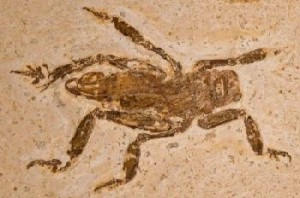Researchers have discovered the 100 million-year-old ancestor of a group of large, carnivorous, cricket-like insects that still live today in southern Asia, northern Indochina and Africa. The new find, in a limestone fossil bed in northeastern Brazil, corrects the mistaken classification of another fossil of this type and reveals that the genus has undergone very little evolutionary change since the Early Cretaceous Period, a time of dinosaurs just before the breakup of the supercontinent Gondwana.

A fossil found in northeastern Brazil confirmed that the splay-footed cricket of today has at least a 100-million-year-old pedigree. – Hwaja Goetz
The findings are described in a paper in the open access journal ZooKeys.
“Schizodactylidae, or splay-footed crickets, are an unusual group of large, fearsome-looking predatory insects related to the true crickets, katydids and grasshoppers, in the order Orthoptera,” said University of Illinois entomologist and lead author Sam Heads, of the Illinois Natural History Survey. “They get their common name from the large, paddle-like projections on their feet, which help support their large bodies as they move around their sandy habitats, hunting down prey.”
Although the fossil is distinct from today’s splay-footed crickets, its general features differ very little, Heads said, revealing that the genus has been in a period of “evolutionary stasis” for at least the last 100 million years.
Other studies have determined that the region where the fossil was found was most likely an arid or semi-arid monsoonal environment during the Early Cretaceous Period, Heads said, “suggesting that the habitat preferences of Schizodactylus have changed little in over 100 million years.”
Note: This story has been adapted from a news release issued by the University of Illinois at Urbana-Champaign



 August 18th, 2012
August 18th, 2012  riffin
riffin  Posted in
Posted in 